Foreword
10 months after announcing their Indiegogo campaign back in May 2017, Walnutt finally delivered the Spectra Mini to my doorstep in March 2018.
Originally scheduled to deliver in December 2017, the board was delayed for a few months – as expected.
(Wanna know exactly how common delays are? check out my Audit on Eskate crowdfunding campaigns of 2017).
The Spectra Mini is special, for it is among the first electric skateboards that can fit into a backpack.
On top of that, it was only the second posture controlled electric skateboard on the market when it was announced. (with the first being Zboard.)
So after riding this board for a few weeks and trying my best to incorporate it into my life, is the Spectra Mini able to fulfill its role as the most portable last mile solution?
This is the question I tried to answer.
Introduction of WALNUTT
Walnut Technology Limited
WALNUTT stands for Walnut Technology Limited.
The company first arrived at the scene in January 2017, when they showcased the Walnutt Spectra in CES 2017. However, it was only when they launched their Spectra Indiegogo campaign in May 2017 that the world got its first proper look at them.
Walnutt is by no means a small startup. It is a full-fledged company with 30 plus employees.
“Based in San Francisco and Hong Kong, Walnut Tech is advised by DJI, with its core members from University of California, Berkeley and Hong Kong University of Science and Technology”,
Walnutt is not so much an electric skateboard company but an electric vehicle company.
With that in mind, it is easy to understand the design choices they made with the Spectra Series – Aiming to get you from point A to point B but not for “a skateboard-like experience”.
Without a previous track record, it is very difficult to tell what kind of company Walnutt will turn out to be:
Are they a one-and-done company which will disappear after the Indiegogo Campaign? or will they stay in the community and continue to serve their customers with updates, improvements and perhaps new products?
From my email interaction with their team, Walnutt reassured me that they are building a brand and are here to stay. As a paying customer, I certainly hope so.
It is a reassuring sign that, although their Indiegogo campaign for the Spectra is not without faults (needing to pay extra for delivery and delays), team Walnutt is always on point in communicating with the backers and providing updates. This alone makes them a better company than 80% of other Eskate crowdfunding startups.
Long story short, although Walnutt is still yet to prove themselves, though they are doing well so far.
By the way, Walnutt also has Swagtron as their exclusive distributor in Amazon. This explains all the Swagtron Spectra Ads we see.
The Walnutt Quartet
Ambitious as they were, Walnutt launched their Indiegogo campaign with the announcement of 4 boards – Spectra Mini, Spectra Advance, Spectra Pro and Spectra Silver.
With the smallest Spectra Mini measuring at just 17 inches ( 43.2cm) and the longest Spectra Silver measuring at 23 inches (58.4cm), the Spectras is a fleet of “shorter than penny” boards.
They are all posture controlled with the option of controlling them with the smartphone app via Bluetooth – a great way to break your expensive phones if you ask me.
Among the Spectras, the most popular would be the Spectra Mini.
I guess it makes sense as one won’t be buying a Spectra if it wasn’t for the small size; and if a small size is what one is after, one might as well as choose the tiniest Spectra Mini.
And being cheapest at $299 Indiegogo price certainly helps.
In fact, the size is why I chose Spectra Mini over Lou Boards!
Walnutt Spectra Mini Review
Spectra Mini Overall specs

- Top Speed: 9.3mph (15kmh)
- Range: 5.6mil (9km)
- Weight: 9.26lbs (4.2kg)
- Charge Time: 45min
- Features: Weatherproof, Regenerative Braking, Phone App, LED lights and flight compatible battery.
- Price: less than 400 USD.
Build Quality
Walnutt is a big company and their product reflected that – tidy, clean and fleckless.
It is difficult to judge the quality of the internal parts but everything looks good from the outside.
The trucks are thick the decks are pretty. Wheels, bushing all looks good.
The finishing of this thing is tip top.
A few weeks of abusing the board with lots of flipping, and crashing into walls, Spectra Mini holds up without a problem besides the grip tape peeling away a tiny bit in the corner.
The fact that there is barely any failure reported from the early backers is another good indicator that Walnutt maintains a certain level of quality control for the Spectras.
In short, the Walnutt Spectra Mini is built well and packaged well.
Riding Experience:
Overall
The riding experience of the Spectra Mini depends on two factors- how stable the small board is and how well the posture control works.
Stability
Walnutt Spectra Mini scores an A+ in this department.
It is surprisingly stable and comfortable to maneuver for its tiny size.
Carving with this Mini board is fun, and rarely do I lose balance on it.
This is the result of designing the front truck to be wider than the rear while also using wider wheels for the front wheels.
In fact, the Spectra Mini feels a lot more stable and easier to ride if compares to a regular penny board; even though Mini is both shorter and higher off the ground.

Spectra Mini is also rocking surprisingly big 80mm wheels that can safely roll over most cracks and bumps.
I am guessing the compact weight (9.26lbs in 17inch body) also helps in keeping the board stable during rides.
I really don’t mind if more eskates copies a setup like this.
Posture control – Acceleration and Deceleration
Now, let us get to the meat of this review, the posture control.

Despite most of us seeing Caisey Neistat struggling to get a Spectra Pro moving, the posture control isn’t really that hard to learn.
I had 4 different friends try out the Spectra Mini and all of them got it on the first or second try.
With the correct foot placement, the board will start moving once you stand up on it. Easy.
Lean forward, the board will start accelerating.
To brake, one can either lean backward or lift the heel of the leading foot.
Pretty straightforward huh?
HOWEVER, there is a huge difference between learning it and mastering it.
Let’s talks about deceleration and braking first, since these are the factors that really annoyed me because braking with posture control on the Spectra Mini is very unreliable.
Let’s just say, I manage to successfully execute braking only about 40% of the time.
The other 60% of the time I couldn’t get the board to brake or even slow down no matter how much I leaned backward. I end up just running off the board and rely on the board to “smart brake” by itself.
If braking to stop is already such a big challenge, imagine trying to slow down but not to stop to a halt. It is damn difficult to tell if the brake is already engaged if the braking is gentle, and braking too much is as often a problem as braking too little.
It is also quite scary to lean back when you couldn’t trust the brake.
Leaning backward while the board continues to accelerate is a recipe to wipe out – Thankfully the Mini isn’t fast enough to be dangerous.
And although the acceleration is easier to execute, it is also in no-way reliable.
At times, I couldn’t get the board to accelerate and it just rolled forward slowly no matter how hard I leaned forward.
Other times, it slowed down without me doing anything and wouldn’t accelerate anymore until I stepped off and remounted the board.
All these factors make it impossible to control the speed while using the posture control.
Slowing down without stopping or cruising below top speed on the Spectra Mini are achievements worthy of medals.
Stopping at an exact point is another skill that is so impossible to master that Walnutt should make a sporting event out of it.
Use foot-braking you say?
Sorry to break it to you but if you keep your front leg on the board and tried to foot brake with your back leg, the board will accelerate to top speed as you are putting your weight directly on the front sensor. Argh.

Bad enough?
Just remember that all this problem is further magnified when riding in uneven terrain, as your body weight is thrown around sending mix signal to the sensor.
What compounded the problem is there is no way to tell why the posture control is not working as you intended.
Is it the foot placement? Is it because I didn’t lean hard enough? Is it a problem with the sensor?
Team Walnutt did try to alleviate some of the problems by allowing the user to tweak the acceleration and deceleration profile through their mobile app.
By using the app and the 3 riding modes available, there is quite a lot of tweaking one could do to make sure the board rides the way you like.
While this did help solve the problem for some users, it did not for me.
Also, adjusting the setting wasn’t the most intuitive experience.
It is very hard to tell which slider does what, and the effects are not easily demonstrable as the same “posture” doesn’t always detect the same way.
Remote Control
For those who choose to op out from the posture control, there is an option to control the Spectra with its smartphone app.
And I would like to go on record to say this-
A smartphone is definitely the worst possible remote control for an electric skateboard. Because:
- It is difficult to control the dial with one hand on a big phone ( I am using Galaxy Note 8)
- It wasn’t as responsive.
- It takes a minute to set up, and that is if your phone could detect your board.
- It is a great way to shatter your expensive phone if you either fall or drop your phone.
I was very resistant to using the smartphone remote for the above reasons but I eventually gave in as this was the only way for me to ride the board comfortably.
Not surprisingly, when you take the posture control out of the equation, Spectra Mini is actually really fun to ride.
It is gentle with speed change, it is stable and maneuverable, and it’s fun to carve around on.
It is everything I hoped it can be, minus a good remote.
I really hope Walnutt offers the option to control the board via a standard remote
because I really like the way Spectra Mini rides, (sans the posture control) but couldn’t stand the smartphone remote.
Summary of Riding Experience
Riding using the posture control of the Walnutt Spectra Mini is really amazing when everything goes right.
When the board behaves as you intended, speeding up and slowing down with just the change of your weight, the feeling is magical.
Sadly, that’s only about 40% of the time.
If you are taking the Spectra on a joyride where you have a long stretch of road that allows you to cruise on top speed, Spectra will feel awesome – as you essentially took out the acceleration and deceleration problem from the equation.
However, why would anyone choose this tiny board to go on a joyride? Longboards are made for that purpose!
The fact is, if I couldn’t control Spectra Mini’s speed in a reliable manner, I couldn’t use it on city sidewalks or crowded places where tight maneuvers are required.
Although the smartphone remote is a viable workaround, it is a poor one.
It really hurt the experience that one can have with this otherwise fun tiny board.
Capability
Range
Spectra Mini has a very small battery at 29.76WH.
This translated to around 5.6 miles or 9km range.
In the range test that I conducted, I get around 4.5miles or 7km before I ran the battery dry.
I weigh 165lbs (75kg) and kept the board at around 13-15kmh with some stopping.
Basically, if you run the motor at top speed (9.3mph/ 15kmh) on flat ground without stopping, you can expect the board to last only around 25 minutes – easiest range test ever.
There is no voltage sag until you reach 20% battery life when the top speed drops to 9mph(14kmh). You will only notice it if you are using the Pro mode.
At 10% battery life, the board will just stop. Basically 10% = 0%.
The board charged up in just 45 minutes or so, which is nice, but the range of the Spectra Mini means it couldn’t do much other than getting you around the block or to the bus station.
Speed
The Spectra Mini is really a slow board made for the sidewalks so don’t expect too much in the speed department.
I get a top speed of 11mph(18kmh) on my Spectra Mini which is above the advertised top speed and more than I need out of it.
It is somewhat comforting to know that the Mini will never be too fast for a running bail, considering the posture control is scary, to say the least.
Torque
The Walnutt Spectra Mini is powered by a single 200W hub motor on its right front wheel.
It is definitely weak.

At 165lb(75kg), Walnutt Spectra Mini is only strong enough for me on the flat ground.
It could not run up any incline at all.
So if you are heavy, or intended to climb any hill, Spectra Mini is definitely not for you.
And, just a friendly reminder, posture control and hills don’t mix well.
Customer Service
Walnutt hasn’t been around long enough to prove its customer service.
So far, however, they have been really prompt in addressing any issue that backers faced, and from the looks of it, they resolved those issues well too.
There also hasn’t been any complaints about the company. So I couldn’t subtract marks there.
I’ve interacted with Walnutt’s post-sales team to track my shipping and PR team for research in writing this post. They replied to me promptly and courteously on both accounts.
So far, so good. Keep up the good work team Walnutt!
Other Features
Portability
The best thing about Spectra Mini is its portability.
It has such a small body that it could fit into a big backpack.
There is no other board on the market that can do this yet. (Maybe the upcoming Ionpod could?)
Smartphone App
The smartphone app is definitely the most important feature that the Spectra has.
For starters, you need the smartphone app to change between 3 riding modes.
(Beginner, Sport, and Pro mode.)
Acceleration and deceleration can be also tweaked through this app.
Last but not least, it is this app that turns your phone into a remote control.
LED headlights
Spectra Mini has a pair of LED headlights that is fairly bright. It can be switch on independently with a button at the right side of the board.
…
Verdict
I backed the Spectra Mini with the hope that it could be the board to I bring anywhere I go.
It would be nice to ride to the train station/ shopping complex and then store in my backpack.
By abandoning the posture control and sticking with the sub-par smartphone remote, the Spectra Mini can do just that for me. The lack of a proper remote took a lot away from the experience and I am certain some cheap board from Alibaba can serve the same purpose for a lot less money.
Now that I have it, the Spectra Mini is definite the board I bring when I visit an E-vehicle friendly city like Singapore, but I would not recommend for anyone buy it as an everyday commuter.

TL;DR
The Walnutt Spectra Mini is fun to ride, however, the posture control (its biggest weak point), is unfortunately, a dealbreaker. Unless Walnutt can solve the posture control woes miraculously through firmware updates, there isn’t much value in it.
Even if Walnutt can by-pass this problem by making a remote control available, at $399, the board is still overpriced for the little things that it does well.
It will make existing customers like myself very happy though!






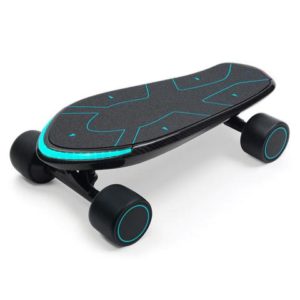
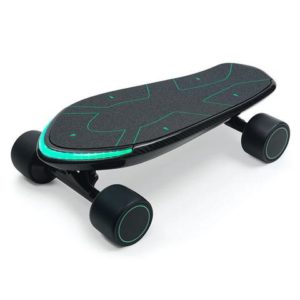



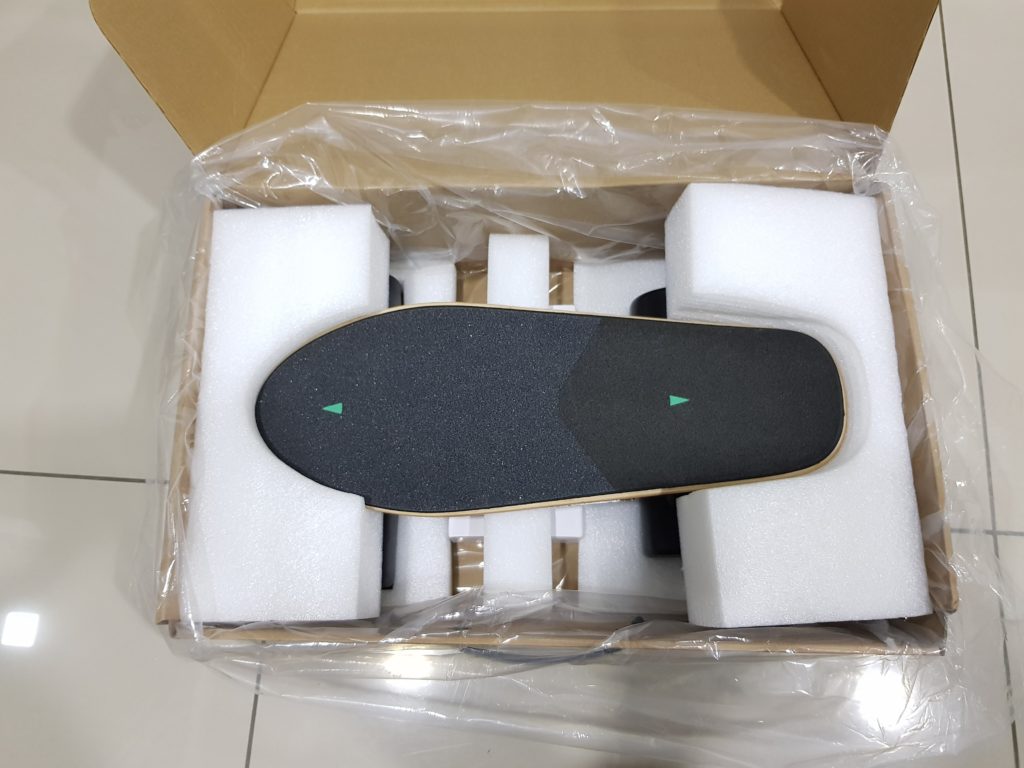






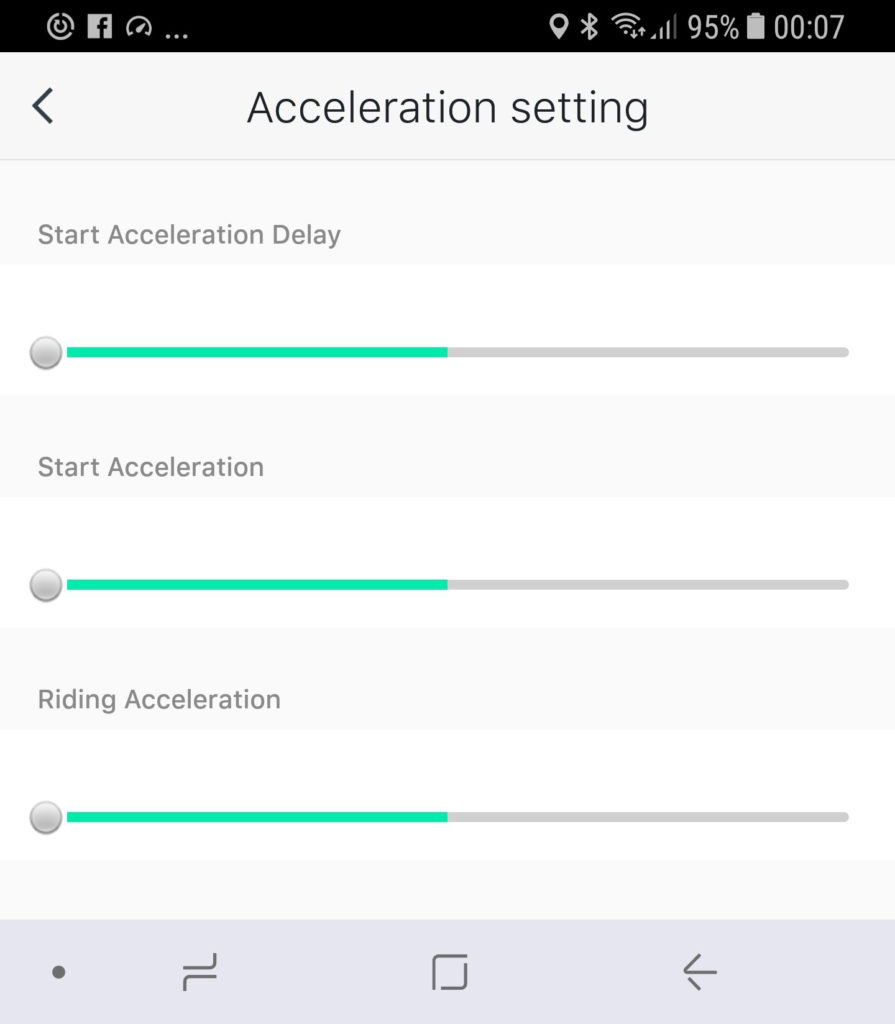
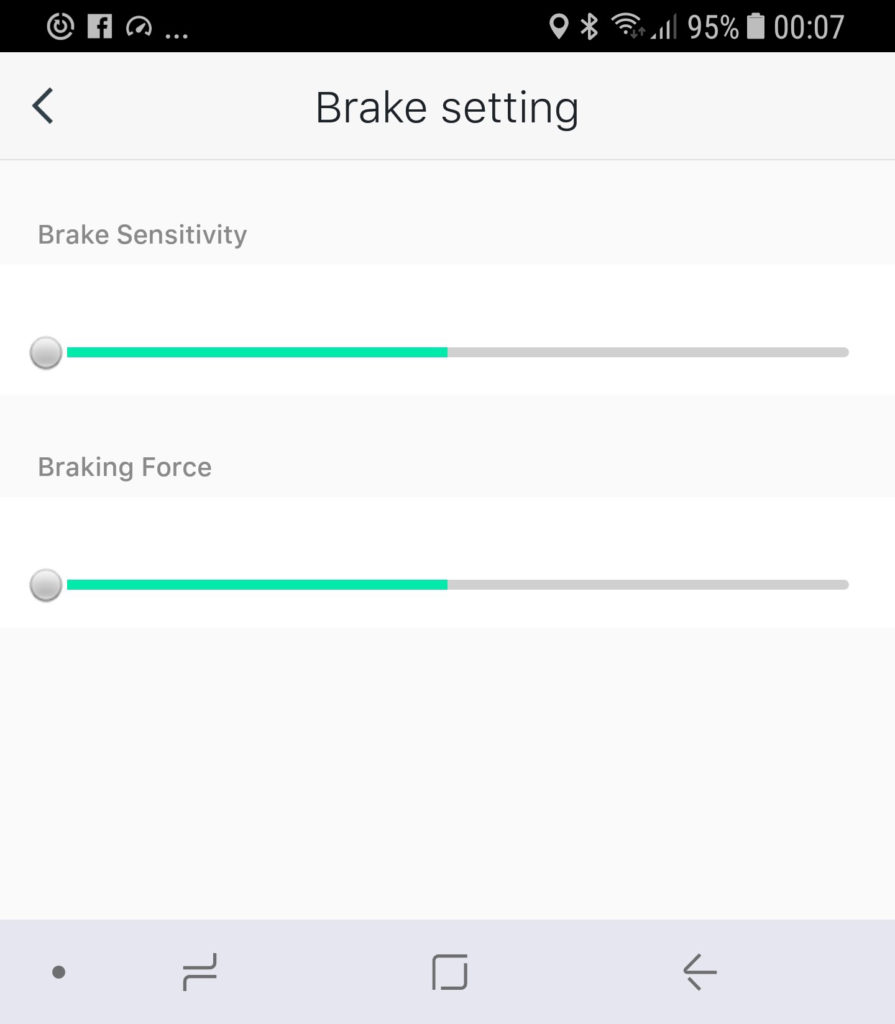


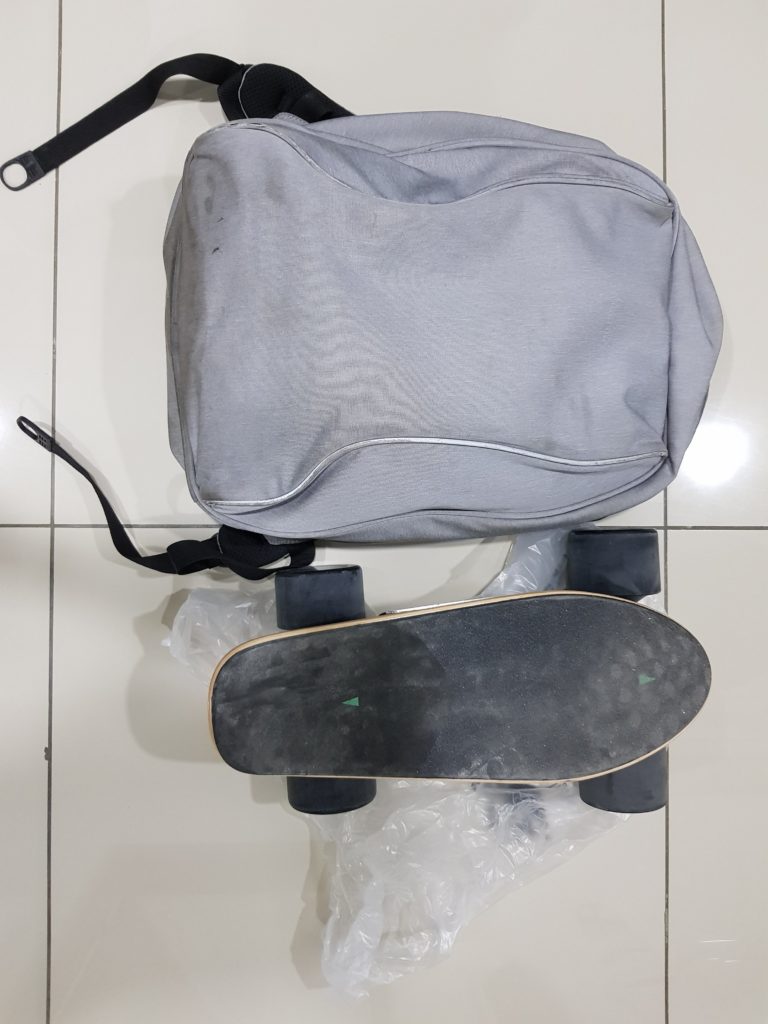



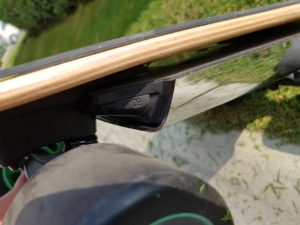
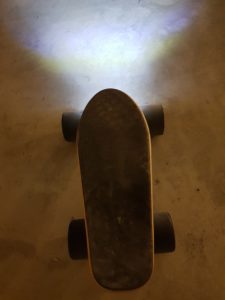

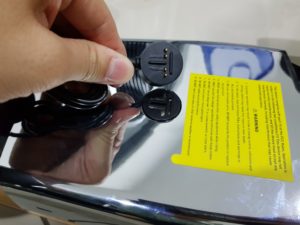

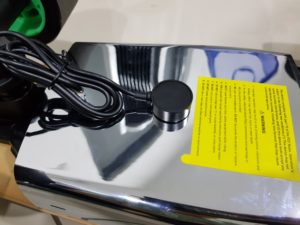
Well, it seems no other reviewer was wrong, then. They’ve all said the same thing. On to the DIY electric ELOS or waiting for the Ionpod. Thanks!
They tried it for 5 minutes and declared that it sux.
I just really want to give it a fair shot… Too bad it is still bad.
I am not sure how well Elos rides though. I like the deck, truck, wheel design of the Spectra Mini, I think Mini should be better than ELOS in terms of stability and maneuvrebility.
I’d suggest giving the stance thing one more chance. My experience with my Spectra Pro was the same as yours for the first 2-3 weeks, but then it improved. I’m not sure if I got better or the board got better, but the experience definitely improved.
I use the rolling start mode, and always lift my front heel to stop. I can’t control speed very well, as you also mention, but starting and stopping is very reliable.
In fact, my main issue now is that I’d like the braking to be harder. It’s too soft now that I’ve gotten better at managing it.
I still use it and for the Mini, I can get it to work quite reliably on the Beginners mode.
Once speeds come in, AKA on sport mode, the brake and acceleration became problematic. Perhaps the deck of Mini is too small for me to go fast?
I agree, the size is probably the primary factor. I use the Spectra Pro in Pro-mode almost all the time, but my feet are at the very edges of the board, and I’m fairly confident on small boards. I’ve been riding Penny’s and street skateboards since early 80s, but even then I don’t think I’d be comfortable with losing any more real-estate.
What has surprised me the most is how stable and smooth it feels. Even at highest speed and before tightening the bushings, it was a lot smoother than I expected.
My main gripe is the braking distance and the lack of speed control. Shifting from a street to a sidewalk almost requires that you change mode on the app and that is downright annoying.
Exactly, I also wish that they allow top speed to be adjusted via app. It will be so helpful!